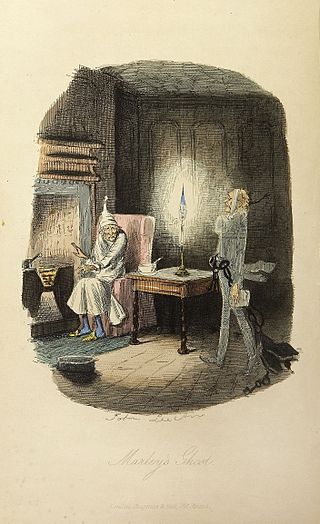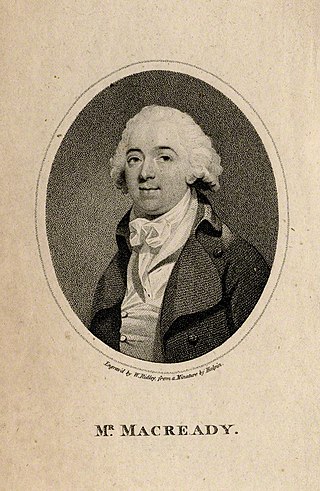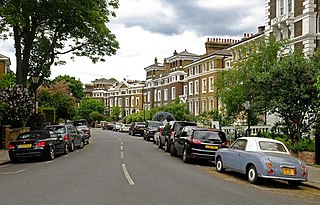
Ebenezer Scrooge is a fictional character and the protagonist of Charles Dickens's 1843 novel, A Christmas Carol. Initially a cold-hearted miser who despises Christmas, his redemption by visits from the ghost of Jacob Marley, the Ghost of Christmas Past, the Ghost of Christmas Present, and the Ghost of Christmas Yet to Come has become a defining tale of the Christmas holiday in the English-speaking world.

Southwark Bridge is an arch bridge in London, for traffic linking the district of Southwark and the City across the River Thames. Besides when others are closed for temporary repairs, it has the least traffic of the Thames bridges in London.

Temple Bar was the principal ceremonial entrance to the City of London from the City of Westminster. In the Middle Ages, London expanded city jurisdiction beyond its walls to gates, called 'bars', which were erected across thoroughfares. To the west of the City of London, the bar was located adjacent to the area known as the Temple. Temple Bar was situated on the historic royal ceremonial route from the Palace of the Tower of London to the old Palace of Westminster, the two chief residences of the medieval English monarchs, and from the Palace of Westminster to St Paul's Cathedral. The road east of the bar within the city was Fleet Street, while the road to the west, in Westminster, was The Strand.

Gloucester is a constituency centred on the cathedral city and county town of the same name, represented in the House of Commons of the UK by Alex McIntyre of the Labour Party.

The Princess's Theatre or Princess Theatre was a theatre in Oxford Street, London. The building opened in 1828 as the "Queen's Bazaar" and housed a diorama by Clarkson Stanfield and David Roberts. It was converted into a theatre and opened in 1836 as the Princess's Theatre, named for then Princess Victoria before her accession as queen. After an unsuccessful series of promenade concerts, alterations were made on the interior, and the theatre was reopened on 26 December 1842 with Vincenzo Bellini's opera La sonnambula. The theatre, by now under the management of John Medex Maddox, presented operas and other entertainments, such as General Tom Thumb.

Gloucester Castle was a Norman-era royal castle situated in the city of Gloucester in Gloucestershire, England. It was demolished in 1787 and replaced by Gloucester Prison.

The George and Vulture is a restaurant in London. There has been an inn on the site, which is off Lombard Street in the historic City of London district, since 1142. It was said to be a meeting place of the notorious Hellfire Club and has long been a revered City chop house.

Tavistock House was the London home of the noted British author Charles Dickens and his family from 1851 to 1860. At Tavistock House Dickens wrote Bleak House, Hard Times, Little Dorrit and A Tale of Two Cities. He also put on amateur theatricals there which are described in John Forster's Life of Charles Dickens. Later, it was the home of William and Georgina Weldon, whose lodger was the French composer Charles Gounod, who composed part of his opera Polyeucte at the house.

The New Inn, 16 Northgate Street, Gloucester, England, is a timber framed building used as a public house, hotel and restaurant. It is the most complete surviving example of a medieval courtyard inn with galleries in Britain, and is a Grade I listed building. The announcement of Lady Jane Grey's succession to the English throne was made from the Inn gallery in 1553.

The Westgate area of Gloucester is centred on Westgate Street, one of the four main streets of Gloucester and one of the oldest parts of the city. The population of the Westgate ward in Gloucester was 6,687 at the time of the 2011 Census.

John Boles Watson built the first permanent theatre in Cheltenham at York Passage, 1782. Boles Watson also built the Theatre Royal, Gloucester, in 1791 and was closely associated with the Cirencester theatre.
John Blinkhorn was a Gloucester businessman who in 1857 purchased the Theatre Royal at Gloucester, at which Charles Dickens once performed. At its centenary in 1891, Sir Henry Irving and Ellen Terry both appeared with members of the Lyceum Company. In 1902 the theatre was sold again to Charles Poole who changed it to a variety theatre and picture house.

The North Wall Arts Centre is a performing arts centre in Oxford, owned by St Edward's School and shared with the city. It houses a 200-seat theatre, plus a rehearsal space, dance studio and a visual art gallery. The arts centre hosts touring theatre companies, musicians and other public events, as well as events by the school, with the aim to provide facilities and arts events both for St Edward's students and for the public at large.
White City is an estate in the City of Gloucester. It takes its name from the original white concrete houses.
Astley's Amphitheatre was a theatre on Peter Street, Dublin, which operated from 1789 to 1812. Established by Philip Astley, it was Ireland's first circus and, in later years, was known as the Royal Hibernian Theatre.

William Macready the Elder (1755–1829) was an Irish actor-manager.

The Fleece Hotel, Westgate Street, Gloucester is a timber framed building dating from the 15th century, which incorporated a 12th-century stone undercroft. The building is part grade I and part grade II listed with Historic England.

Kensington New Town is an area of housing in Kensington, London, which was developed in the early 19th century. It lies to the south of Kensington High Street and to the southwest of Kensington Gardens.

Gloucester Crescent is an 1840s Victorian residential crescent in Camden Town in London which from the early 1960s gained a bohemian reputation as “the trendiest street in London” and "Britain's cleverest street" when it became home for many British writers, artists and intellectuals including Jonathan Miller, George Melly, Alan Bennett and Alice Thomas Ellis.

The Theatre Royal, Marylebone was a Victorian era theatre in the Marylebone area of London. Built in 1831, at various other times it was a music hall, a cinema and warehouse until it was damaged by fire in 1962, when it was demolished.

















